
We are pleased to announce the publication of our latest article, “Orogenward Migration of the Flexural Forebulge: A Response to Increased (Sub)surface Loading in the Orogenic Core?”.
This study presents new insights into the tectonic forces that reshaped the Eastern Northern Alpine Foreland Basin during the early Miocene. By integrating seismic observations with flexural modeling, the research highlights the role of both surface and subsurface loads in driving forebulge migration.
The publication is the result of a collaborative effort by our group members Lucas, Giridas, and Nevena, and is now available online.
Eskens et al., 2025c (Terra Nova)

We are pleased to inform you that an article from the research group on "The Tectonostratigraphic Expression of Slab Breakoff in Foreland Basins: Insights From 2D Forward Stratigraphic Modeling" is now published and available online.
This work is a collaboration between Lucas, Nevena from our group and A. Piccolo (University of Leeds), M. Thielmann (University of Bonn), B. Claussmann (SLB Abingdon Technology Centre), M. Lejri (SLB Norway Technology Center), and T. A. Ehlers (University of Glasgow).
This research project combined geodynamic models with forward stratigraphic models to investigate the stratigraphic fingerprint of slab breakoff in a pro-foreland basin. It is shown that slab breakoff may be recognised in reflection seismic data. This project exemplifies the strength when universities and companies join forces.

We are pleased to inform you that an article led by Nevena on "Contributions of arid climate and hydrothermal fluid flowon sedimentation in saline-alkaline lakes: Insight from theIbar intramontane basin (Southern Serbia)" is now published and available online.
This work is a collaboration between Nevena from our group and Benjamin F. Walter (Univ. Tübingen), Vladimir Simić (University of Belgrade), Mohsin Raza (KIT), Dragana Životić (University of Belgrade), Željana Novković (MMI Bor Mining and Metallurgy, Bor,Serbia), Jochen Kolb (KIT), Axel Gerdes and Aratz Beranoaguirre (Goethe- Universität Frankfurt)
This study highlights the importance of the tectonics of the collisional orogens and associated processes, arid climate and basin hydro-logical regime on the deposition of B, Ca- rich deposits in saline-alkaline lakes.
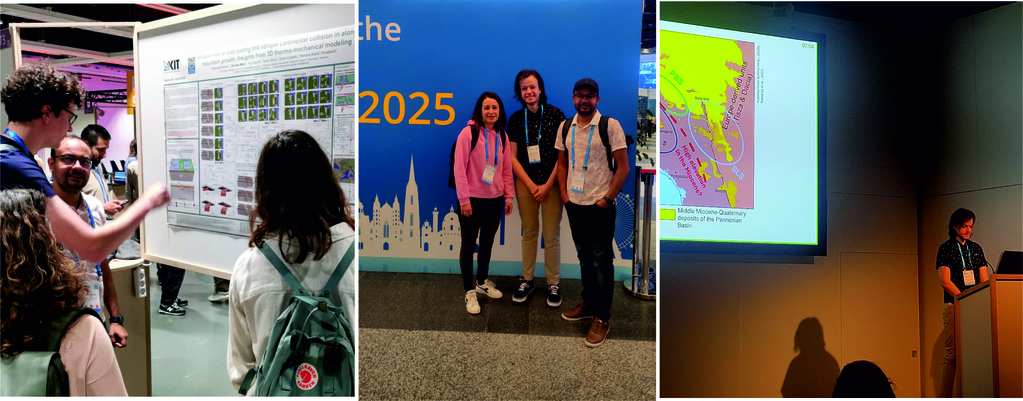
Nevena, Giridas, Robert attended the EGU General Assembly conference in Vienna from 27th April to 3rd May 2025.
Nevena co-hosted a session on tectonics" TS2.7 Alpine-Mediterranean Tectonics: Subduction, Continental Collision, Magmatism and Volcanism" and presented a poster on " The role of the arid climate and hydrothermal fluids in depositional processes in saline alkaline lakes: inferences from Ibar intramountain basin (Serbia)"
Giridas presented two posters on his postdoc work: 1 ) "Slow Propagation of Slab Tearing at Collisional Boundaries: Implications for Foreland Basin Evolution and Adjacent Mountain Uplift" and 2) "Relative role of slab tearing and oblique continental collision in along-strike mountain growth: Insights from 3D thermo-mechanical modeling"
Robert presented an oral presentation on his PhD work on " Depositional evolution of the Valjevo-Mionica Basin (Internal Dinarides, Serbia) revealed through U-Pb zircon dating: correlation with regional tectonics and Miocene climate change "
EGU General Assembly 2025TT. Prof. Dr. Nevena Tomašević, head of the General Geology Research Group at KIT, has been featured as a role model for women in science. Her journey highlights the challenges of balancing career and family, a barrier many #Frauen (women) face in #Wissenschaft (science).
To promote #Chancengleichheit (equal opportunity), KIT’s tenure-track professorship offers predictable, transparent career paths for young scientists. Dr. Tomašević is paving the way on this path, inspiring others to pursue leadership in STEM.
Learn more here
Nevena Inspires Women in Science Leadership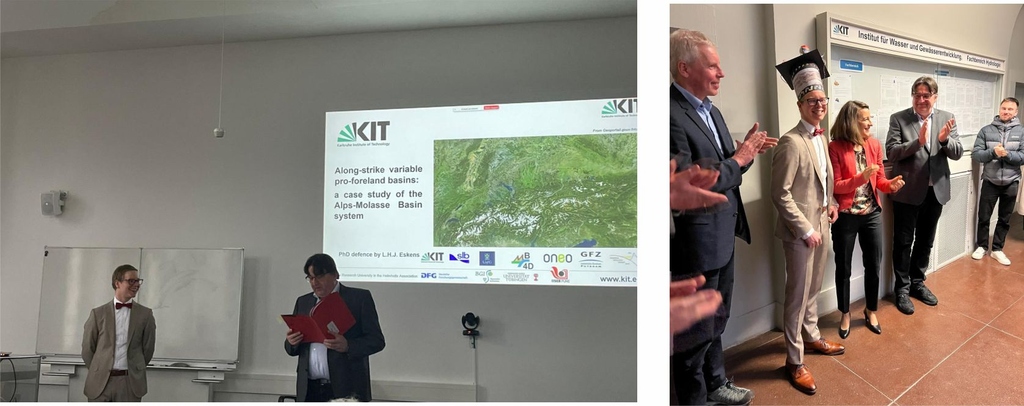
Lucas Eskens successfully defended his PhD thesis on 12.02.2025 and is now Dr. Eskens. Congratualtions! Lucas's PhD thesis focused on the "Along-strike variable pro-foreland basins: a case study of the Alps-Molasse Basin system".
PhD Defense of Lucas Eskens
We are pleased to announce that a new article entitled "Spatiotemporal Growth of Seismic-Scale Syn-FlexuralNormal Faults in the German Molasse Basin" is published from our group in journal Basin Research.
This work is a collaboration between Lucas and Nevena from our group and A. Kumar (GFZ Potsdam), M. Scheck-Wenderoth (GFZ Potsdam).

We are pleased to let you know that our article Topography Response to Horizontal Slab Tearing and Oblique Continental Collision: Insights From 3D Thermomechanical Modeling (doi:10.1029/2024JB029385) is now available online.
This work is a collaboration between Giridas, Paul and Nevena from our group and A. Koptev (GFZ Potsdam), T. Gerya (ETH Zurich), and S. Crosetto (GFZ Potsdam).

Robert attended the GeoSaxonia 2024 conference in Dresden in September 2024 to present (poster session) his PhD work Reconstructing the evolution of the Miocene Sinj Basin through U-Pb zircon geochronology (Dinarides Lake System, Croatia)
This work is a collaboration between Robert and Nevena from our group, O. Mandic (Natural History Museum Vienna), K. Mužek (Croatian Geological Survey), A. Zeh (AGW, KIT) and D. Pavelić (University of Zagreb).
_rdax_1024x366_98.png)
We are pleased to let you know that our article Mineralogy, chemistry, and distribution of selected trace elements in coal and shale from the Ibar Basin (South Serbia) (doi:10.2298/TSCI240405143N) is now available online.
This work is a collaboration between Nevena from our group and Z. Novković (MMI Bor), M. Suárez (Univ. Salamanca), E. García-Romero (Univ. Madrid, IGEO), N. Nikolić, V. Gajić, V. Simić and D. Životić (Univ. of Belgrade).
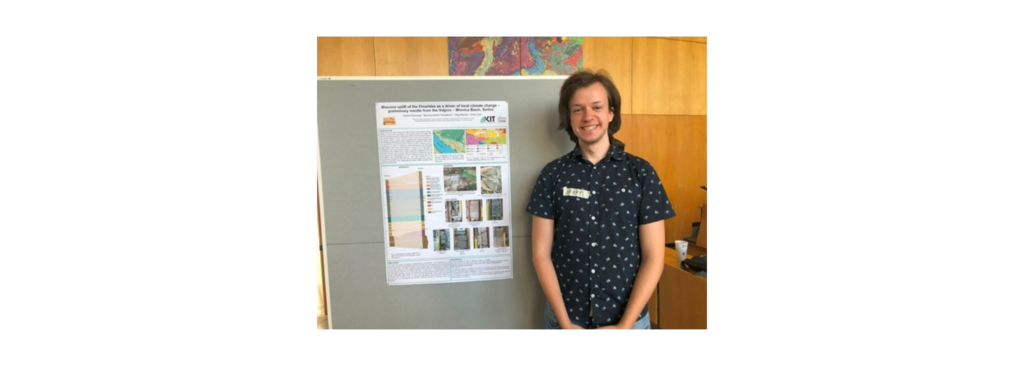
Robert attended the 3rd Early Career Sedimentologist Meeting at the TU Darmstadt in June 2024 to present (poster session) his PhD work Miocene uplift of the Dinarides as a driver of local climate change – preliminary results from the Valjevo – Mionica Basin, Serbia
This work is a collaboration between Robert and Nevena from our group, O. Mandic (Natural History Museum Vienna), and A. Zeh (AGW, KIT).
_rdax_1024x366_98.png)
We are pleased to let you know that our article Scenario Automation in Stratigraphic Multi-Well Correlation: Well Logs Versus Interpretive Rules (and Why We Should Care) (doi: 10.3997/2214-4609.2024101535) is now available online.
This work is a collaboration between Paul from our group and G. Caumon and C. Antoine (RING Team, Univ. Lorraine).
Robert attended the10th NCSEE conference in Podčetrtek in June 2024 to present (poster session) his PhD work New insights gained from zircon U-Pb dating of Miocene volcaniclastic deposits of the Sinj Basin (Dinaride Lake System, Croatia)
This work is a collaboration between Robert and Nevena from our group, and O. Mandic (Natural History Museum Vienna), K. Mužek (Croatian Geological Survey), A. Zeh (AGW, KIT) and D. Pavelić (University of Zagreb).
_rdax_1024x366_98.png)
We are please to let you know that our article Lithospheric- and crustal-scale controls on variations in foreland basin development in the Northern Alpine Foreland Basin (doi: 10.1016/j.tecto.2024.230283) is now available online.
This work is a collaboration between Lucas, Nevena from our group and P. M. Süss (Univ. Tübingen), M. Müller, R. Herrmann (ONEO GmbH) and T. A. Ehlers (Univ. Tübingen, Univ. Glasgow).
In this contribution, seismic-stratigraphic data from the Northern Alpine Foreland Basin was inverted to gain a better understanding of which orogenic mechanisms control foreland basin development.

Lucas, Paul and Nevena attended the AAPG ERC Krakow conference in May 2024.
Lucas presented (oral presentaition) his PhD work Syn-Flexural Normal Faults in Pro-Foreland Basins; What Can They Tell Us About Geodynamics? in collaboration with Nevena, and A. Kumar and M. Scheck-Wenderoth (GFZ Potsdam).
Paul presented (poster session) his postdoc work Stratigraphic correlation of coal-bearing using computer-assisted multi-well correlation in collaboration with Nevena, and D. Životić and V. Simić (Univ. Belgrade).

We are very pleased to welcome Shubham Pathak from Department of Earth Sciences, IIT Roorkee who is granted DAAD-Wise fellowship 2024 for 2 month internship in our group.
His work in our team will focus on the automation of comparing stratigraphic well correlation using computer-assisted approach to be combined with geological prior knowledge.
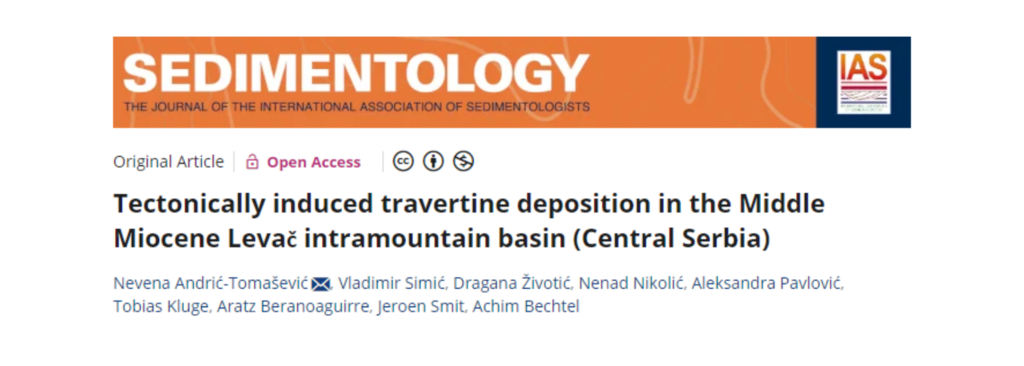
We are pleased to let you know that our article Tectonically induced travertine deposition in the Middle Miocene Levač intramountain basin (Central Serbia) (doi: 10.1111/sed.13171) is now available online, containing full bibliographic details.
This work is a collaboration between Nevena Andrić-Tomašević from our research group, Vladimir Simić (Univ. Belgrade), Dragana Životić (Univ. Belgrade), Nenad Nikolić (Univ. Belgrade), Aleksandra Pavlović (Serbia Zijin Copper), Tobias Kluge (KIT) and Aratz Beranoaguirre (KIT), Jeroen Smit (Univ. Bochum), and Achim Bechtel (MontaUniv. Leoben).
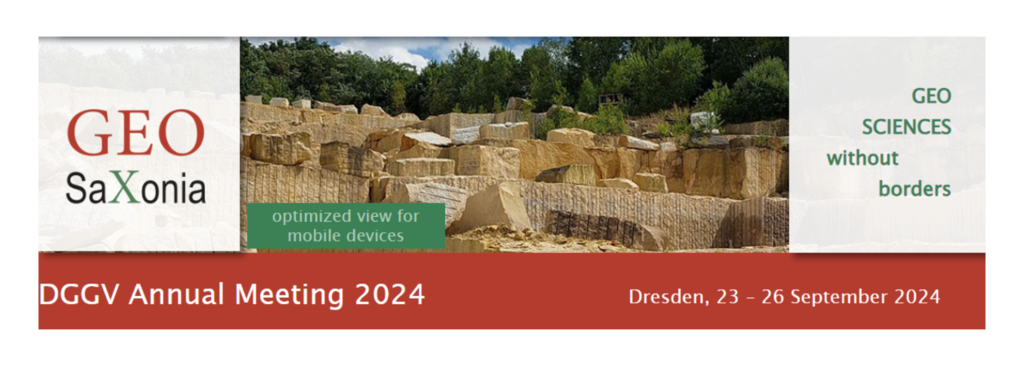
Nevena Andrić-Tomašević, from our research group, Katharina Methner (Univ. Leipzig), Stefanie Tofelde (Univ. Berlin) and Domenico Ravidà (Univ. Göttingen) are hosting a session at GeoSaxonia 2024 (23-26. September).
Conveners invite contributions that aim towards integrating sedimentology, paleontology, structural geology and/or modelling techniques. If this is of interest to you, please submit an abstract (→ https://www.geosaxonia2024.de/call-for-abstracts.html) until May 6th and do not hesitate to ask if you have any questions.
Session 8G description: Sedimentary basins are critical archives for understanding the Earth’s surface response to environmental disturbances, including climate changes, and serve as the primary field for reconstructing Earth’s evolution throughout geological time. Moreover, they offer insights into the mechanisms controlling natural hazards, pollutant transport across the land, the genesis and preservation of natural resources, as well as potential gas/waste storage sites and geothermal reservoirs. Therefore, understanding the processes operating in sedimentary systems is pivotal to effectively address societal challenges such as global warming, natural resources management, energy transition and security by providing a scientific basis for sustainable development strategies.
Here, we invite contributions that utilize multi-disciplinary approaches to investigate and characterize sedimentary successions aiming to retrieve insights about (1) the evolution of depositional environments and the impacts of environmental perturbations – such as changes in climates or tectonic settings – on their development across various temporal and spatial scales; (2) the drivers, magnitudes and frequencies of natural hazards such as mass wasting processes; (3) the quantification of the rates of erosion, sediment transport and deposition. Contributions are welcome from field observations, subsurface studies, proxy reconstructions, as well as physical and numerical modelling that take a holistic approach to understanding the evolution of marine and terrestrial sedimentary systems as recorders of changes in climate, ecosystems and/or tectonics/geodynamics.
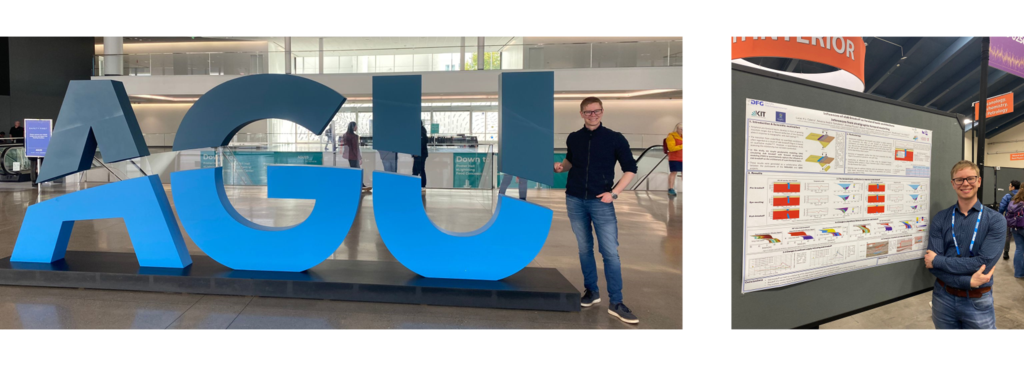
Lucas attended the AAPG Annual Meeting in San Fransisco in December 2023 to present (poster session) his PhD work Is Slab Breakoff Recorded in the Stratigraphic Record of a Foreland Basin? Insights from Forward Stratigraphic Modelling.
This work in a collaboration between Lucas and Nevena from our group and B. Clausmann (SLB).
The results from this contribution suggest isostatic rebound of the mountain range leads to enhanced sediment supply to the basin. Combined with the uplift of the basin itself, this may result in rapid filling of the pro-foreland basin and a transition from under- to overfilled conditions. Signals in the pro-foreland basin forced by breakoff include progradation in coarse-grained deposition, a sudden decrease in depositional water depth, and a transition from (deep) marine to neritic/littoral depositional facies. Synthetic seismic data of the models imply these rapid changes induced by slab breakoff may result in development of a basin-wide unconformity. The above signals become progressively more pronounced for breakoff of steeper dipping slabs and decreased mantle viscosities.
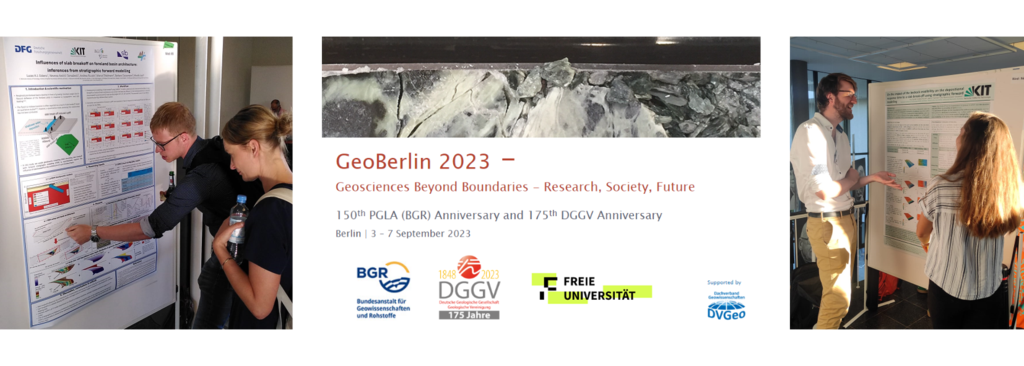
Lucas, Paul, Giridas and Nevena attended the GEO Berlin conference in September 2023.
Lucas presented (poster session) his PhD work Is Slab Breakoff Recorded in the Stratigraphic Record of a Foreland Basin? Insights from Forward Stratigraphic Modelling. This work in a collaboration between Lucas and Nevena from our group and B. Clausmann (SLB).
Paul presented (poster session) his postdoc work On the impact of the bedrock erodibility on the depositional response time to a slab break-off using stratigraphic forward modelling. This work is a collaboration between Paul and Nevena from our group, and A. Piccolo and M. Thielmann (Univ. Bayreuth).
Giridas presented (oral presentation) his postdoc work Effects of an oblique collision on the evolution of foreland basins: Insights from 3D numerical modelling. This work is a collaboration between Giridas, Nevena, Lucas from our group and A. Balázs, T. Gerya (ETH Zurich) and A. Koptev (GFZ Potsdam).
Nevena presented a keynote talk entitled Sedimentary basins: Fingerprinting the lithospheric-scale processes in sesison Tectonic systems.

We welcome our new PhD Student Robert Šamarija.
Robert received his Master-Degree from the Faculty of Science at the University of Zagreb (Croatia). In his Master-Thesis he studied the carbonate platform margin to foreland basin development in the Pre-Karst Unit of the Internal Dinarides.
His Doctoral Thesis will combine U-Pb dating, sedimentological mapping and analysis of fossil material from selected sites to investigate the role of topographic uplift in the development of arid vs humid conditions and fauna distribution across the Dinarides during the Miocene Climatic Optimum (MCO).
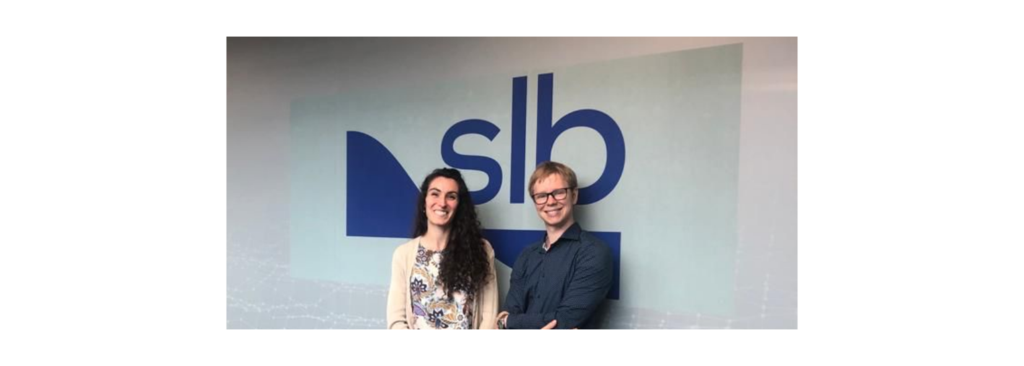
During May, June and July 2023, Lucas visited SLB in Abingdon (UK). Here, he worked in close collaboration with Barbara Claussmann on coupling geodynamic models of slab breakoff with the stratigraphic forward modelling software GPM (Geological Process Modelling) embedded in Petrel. The goal of this coupling was to quantitatively investigate if/how the stratigraphic architecture of a foreland basin changes in the wake of slab breakoff. Tests were conducted for the breakoff of slabs with different subduction angles and mantle rheologies controlling the duration of necking. Furthermore, it was assessed whether 3rd order eustatic cycles can potentially mask the stratigraphic signal from breakoff.
The results indicate that breakoff may result in significant shallowing of the depositional environments in foreland basins. Of first order importance is the isostatic rebound due to the loss of the slab pull force. However, in case this isostatic uplift is not sufficient, increased sediment supply from the uplifted orogen will cause subsequent overfilling. The magnitude of shallowing was greater for slabs with higher subduction angles, resulting from a loss of a greater slab pull force. Furthermore, long durations of necking result in a less prominent stratigraphic signal of breakoff compared to slabs that break off very fast. Lastly, even though not the specific aim, the architecture of the synthetic seismic reflection data generated from the models resembles that of real reflection seismic data in the Austrian Molasse.
After coming back, Lucas will work together with Barbara and Nevena on the publication regarding this work. So if this research interests you, stay tuned for future publications!
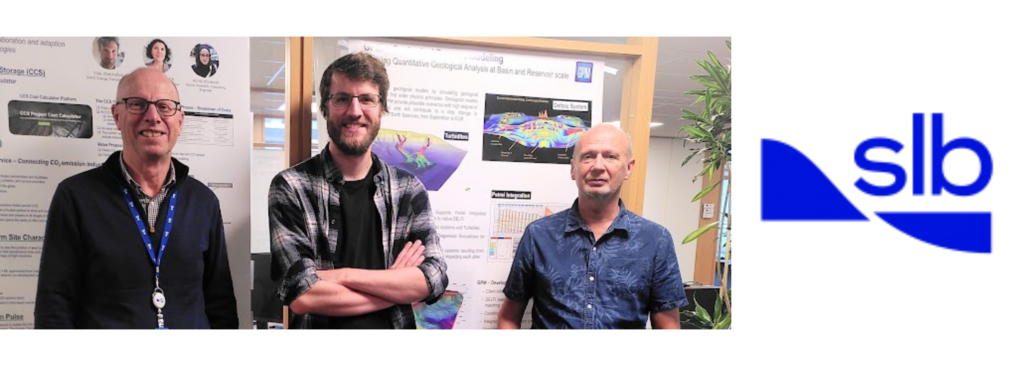
Connecting Young Scientists (ConYS)

Mabrouk Bachari visited our research groud in October 2023 for a collaborative research work with Nevena.
Dr. Mabrouk Bachari - Research Gates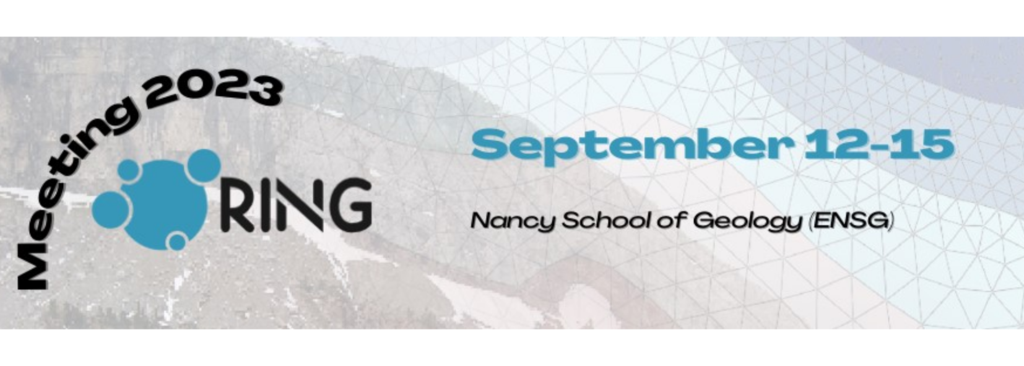
Paul attended the Annual RING Meering in Nancy in September 2023 to present his postdoc work Can source area erodibility delay slab break-off signal in a depositional record: insight from stratigraphic forward modelling.
This work is a a collaboration between Paul and Nevena from our research group.
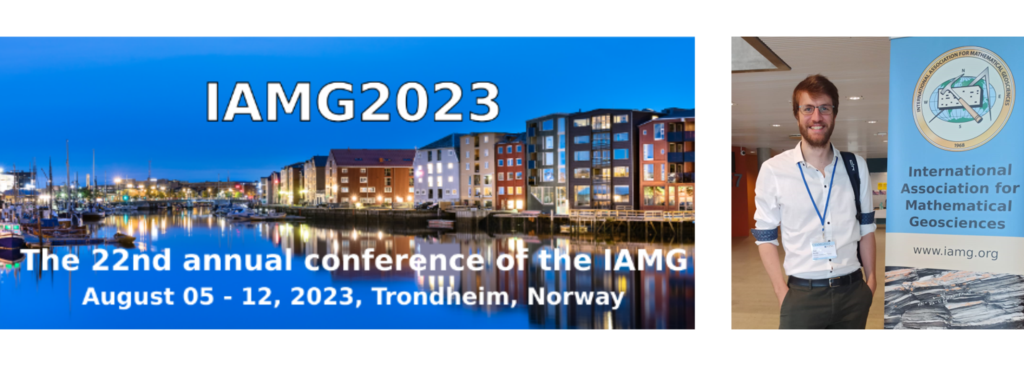
Paul attended the 22nd Annual Conference of the IAMG in Throndheim in August 2023 to present his postdoc work Can source area erodibility delay slab break-off signal in a depositional record: insight from stratigraphic forward modelling.
This work is a a collaboration between Paul and Nevena from our research group.
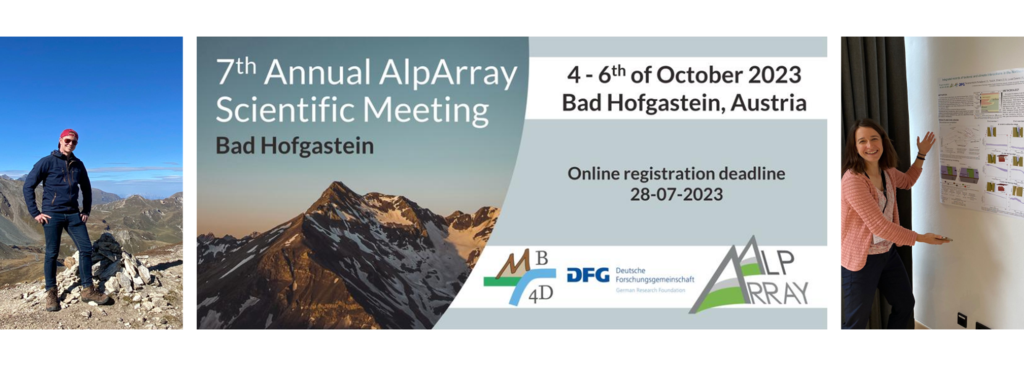
Lucas and Nevena attended the 4DMB Meeting 7th Annual AlpArray Scientific Meeting in Bad Hofgastein in October 2023.
Lucas presented (poster session) his PhD work Is Slab Breakoff Recorded in the Stratigraphic Record of a Foreland Basin? Insights from Forward Stratigraphic Modelling. This work in a collaboration between Lucas and Nevena from our group and B. Clausmann (SLB).
Nevena presented (poster session) her work Integrated records of tectonic and climate interactions in the
Northern Alpine Foreland Basin sedimentary architecture. This work is a collaboration between Nevena, Lucas, Giridas from our group and T. A. Ehlers (Univ. Tübingen, Univ. Glasgow).
Deadline - 5th of July 2023
The General Geology research group at the Karlsruhe Institute of Technology (KIT), Germany, announces 1 PhD position associated with a new Weave (DFG-FWF)-funded project (“Did the Dinaric Alps force an arid climate and speciation during Miocene Climatic Optimum?”). It is a collaborative effort of the Karlsruhe Institute of Technology and Natural History Museum in Vienna that aims to derive a timeline of the evolution of the intramountain basins across the Dinarides, which is pivotal for understanding the mechanisms controlling the mountain growth and its interactions with the climate and fauna. Candidates with interests in sedimentary basin dynamics, stratigraphy, radiometric dating, tectonics and paleoclimate should apply.
The appointment is for 36 months and salaries are at the German TV-E13 level (75%).
Responsibilities: The candidate will 1) compile geological data in order to determine local and regional stratigraphic sequences in intramountain basins across the Dinarides; 2) detailed sedimentological mapping of the boreholes and outcrops of selected basins; 3) do U-Pb dating on the zircons from ash layers and lacustrine carbonates, and 4) collaborate with researchers from Natural History Museum Vienna and collaborators from the University of Belgrade and the University of Zagreb, and industry partners to address the project’s aims. State-of-the-art facilities for U-Pb dating are available at KIT.
Requirements: Requirements for applicants are written and spoken fluency in English and completion of an MSc degree (or equivalent) prior to appointment as a PhD candidate. Grade average during master studies should be good or better (2.0 and below according to the German system). Proficiency in German is beneficial, but not required. Preference will be given to applicants with prior experience in the detailed sedimentological mapping, radiometric dating techniques, and regional geology of the Dinarides. Candidates without prior experience in these areas will also be considered if a willingness to learn these techniques is clearly articulated.
Application: Application materials should include a CV, a 1-2 page cover letter with a statement of research interests, prior experience relevant to the position, and contact information for three referees familiar with the candidate. Questions concerning this position and application materials should be sent as a single PDF file TT. Prof. Dr. Nevena (Andrić) Tomašević (nevena.tomasevic@kit.edu). The expected start date, at the Karlsruhe Institute of Technology, is flexible but should be close to 01.09.2023.
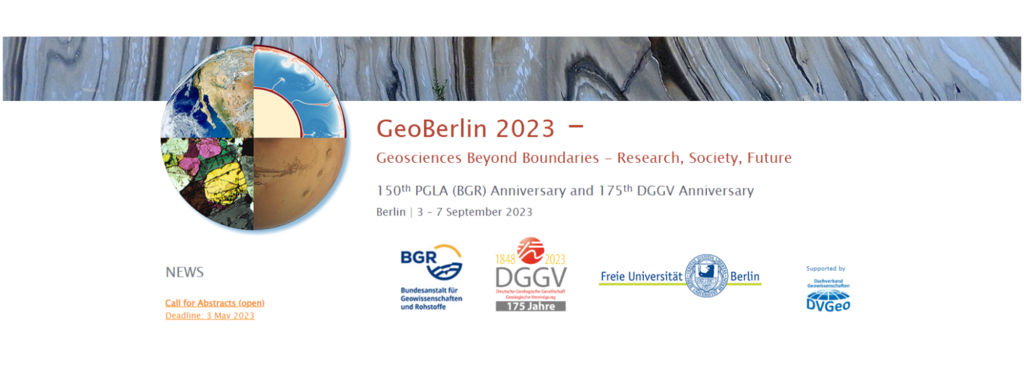
Nevena Andrić-Tomašević, from our research group, Laura Stutenbecker, Anne Bernhardt, and Davit Vasilyan are hosting a session at GeoBerlin2023 (3-7. September): "Foreland basins: Decoding feedbacks between tectonics, climate, and biota".
Conveners invite contributions that aim towards integrating sedimentology, paleontology, structural geology and/or modelling techniques. If this is of interest to you, please submit an abstract until May 3rd and do not hesitate to ask if you have any questions.
Session Description: Foreland basins develop along both fronts of a growing mountain range, making them excellent recorders of crustal- to lithosphericscale deformation, erosion, deposition, topographic changes, regional and global climate changes, and biota evolution and organism dispersal. Therefore, foreland basins offer unique opportunities to study the feedback mechanisms between tectonics, climate, surface processes, and biota at the Earth’s surface. We encourage contributions using multi-disciplinary approaches focusing on decoding foreland basin sedimentary successions and basin dynamics for retrieving information (1) about orogen and basin dynamics, and (2) about interactions between tectonics, climate, surface processes, and biota (fauna and flora). Contributions are welcome from field observations, subsurface studies, and physical and numerical modeling studies across all temporal and spatial scales. We look forward to receiving contributions focusing on forelands associated with both collisional and accretional orogens such as the Andes, North American Cordillera, Alps, Dinarides, Apennines, Carpathians, Caucasus, and forelands in Tethyan, Paratethys, and other realms worldwide.
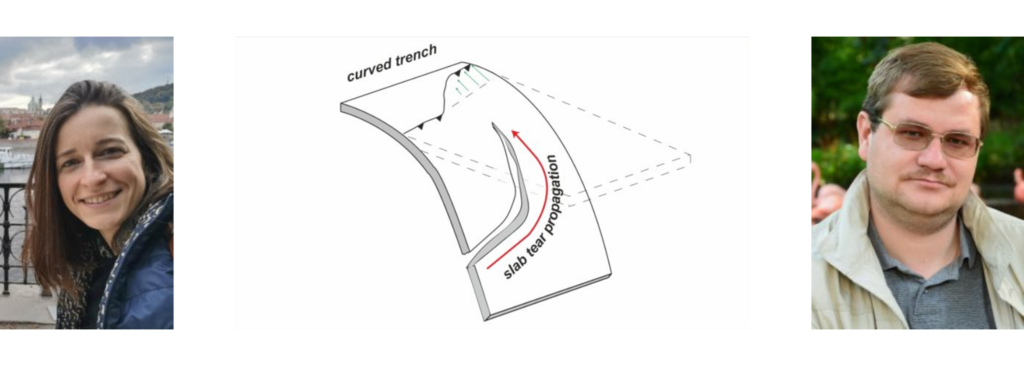
Slab tearing refers to the gradual propagation of the break-off of a subducting plate. As observed in numerous modern and ancient convergent tectonic settings, the growth of the tear “window” in the downgoing plate has strongly influenced various geologic and geodynamic processes, such as depocenter migration of foreland basins, uplift rates in mountain ranges, earthquakes, volcanism, and flow patterns in the upper mantle. However, our understanding of the dynamics of slab break-off and tearing, especially in non-collisional environments, is still limited.
March, Wednesday 29th was the #blogday for the Geodynamics Division. In this week's #EGUblog, Nevena Andrić-Tomašević, Tenure-track Professor at the Institute of Applied Geosciences, Karlsruhe Institute of Technology (KIT), and Alexander Koptev, a postdoctoral researcher at the German Research Centre for Geosciences (GFZ Potsdam), report on their recent work on slab tearing in the context of oblique oceanic subduction.

On March, Monday 20th, Giridas Maiti (Postdoc at KIT), Paul Baville (Postdoc at KIT), Lucas Eskens (PhD Student at KIT) and Andrea Piccolo (Postdoc at BGI, Univ. Bayreuth) joined a field trip to the Northern Black Forest near Baden-Baden guided by Agnes Kontny and Kirsten Drüppel.
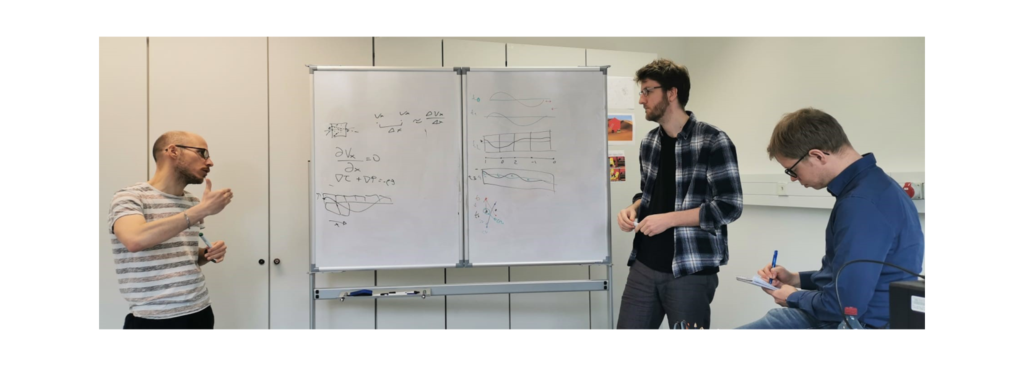
Andrea Piccolo visited our research group between 20th and 29th of March for a collaborative research work on the effects of slab break-off on the evolution of Molasse basin (or North Alpine foreland basin).
He is one of the active developers of the thermo-mechanical code LaMEM which we are using for the Molasse project. He has developed 2D and 3D numerical models in LaMEM to investigate the topographic response of slab break-off in the foreland basin. His model results are being used as input parameters in commercial software Petrel to develop a stratigraphic forward model to assess whether evolution of Molasse basin is influenced by slab break-off process.
Apart from the Molasse project he is our active collaborator in other research projects involving thermo-mechanical code LaMEM.
_rdax_1024x366_98.png)
We are please to let you know that our article Listvenite as gemstone: the Antina Čuka occurrence (Eastern Serbia) (doi: 10.46544/AMS.v27i4.14) is now available online.
This work is a collaboration between Nevena Andrić-Tomašević from our research group and Vladimir Simić (Univ. Belgrade), Zoran Miladinović (Univ. Belgrade), Kristina Šarić (Univ. Belgrade), Nikola Vukocić (Institute for Technology of Nuclear and Other Mineral Raw Materials, Belgrade) and Rajko Kondžulović (GEO MINE, Belgrade).
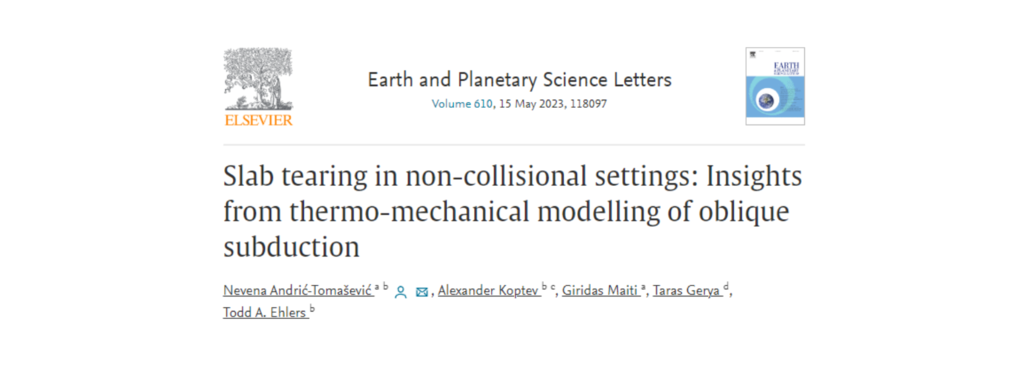
We are pleased to let you know that our article Slab tearing in non-collisional settings: Insights from thermo-mechanical modelling of oblique subduction (doi: 10.1016/j.epsl.2023.118097) is now available online, containing full bibliographic details.
This work is a collaboration between Nevena Andrić-Tomašević and Giridas Maiti from our research group and Alexander Koptev (Univ. Tübingen & GFZ Postdam), Taras Geyra (ETH Zurich) and Todd Ehlers (Univ. Tübingen).
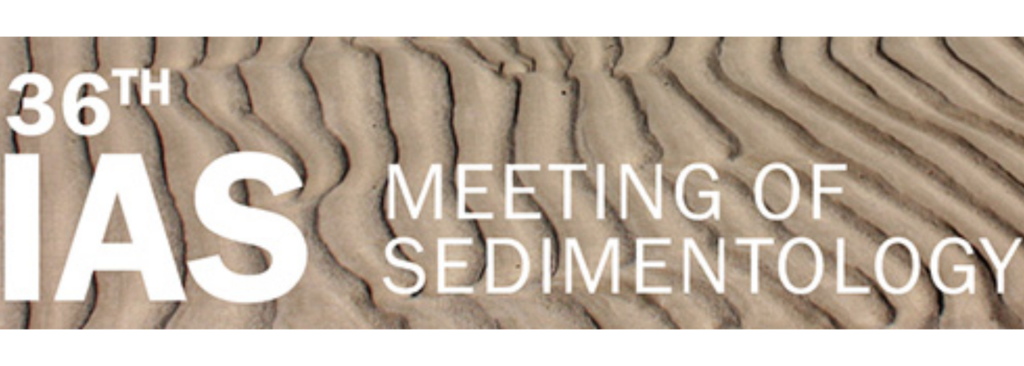
We would like to draw your attention to our session Intramountain basins – recorders of tectonics, climate, and biota interactions during upcoming the 36th International Meeting of Sedimentology taking place in Dubrovnik (12th - 16th June 2023).
Session description: Intramountain basins are an integral part of the mountain ranges. Therefore, they are important recorders of deformation, erosion, syntectonic deposition, magmatic events, variations in biodiversity, and local and regional climatic evolution. Therefore, their sedimentary succession provides an insight into links, interactions, and feedback between tectonics, climate, and biota.
This session aims to assemble research efforts focusing on the dynamics and evolution of the intermountain basins at various temporal and spatial scales, and the “inversion” of their sedimentary record to reconstruct climatic, tectonic and/or biotic evolution/interaction. We invite contributions from the broad field of earth sciences based on field observations, and numerical and experimental work. Please, remember the deadline for abstract submissions is 15th February.
The session will be accompanied by the pre-conference field excursion (10.-12. of June) focusing on the intramountain basins of the Dinarides lake systems and the southern Pannonian basin environmental evolution (excursion A3, please see details https://www.iasdubrovnik2023.org/eng-excursions.php). The IAS offers travel grants for IAS student members (please see details https://www.sedimentologists.org/grants).

We are happy to introduce the newest member of our group, Dr. Paul Baville.
Paul has completed his PhD at the University of Lorraine (France) in the RING Team under the supervision of Prof. Dr. Guillaume Caumon, Dr. Cédric Carpentier and Dr. Marcus Apel. During his PhD, he has evaluated the impact of the transport direction in sedimentary basins on computer-assisted well correlations.
The main purpose of his work in our group is to evalute the impact of structural discontinuities, such as active normal faults, on the sedimentary rock deformation and on the induced hydrodynamic flow behavior of the sedimentary basin.
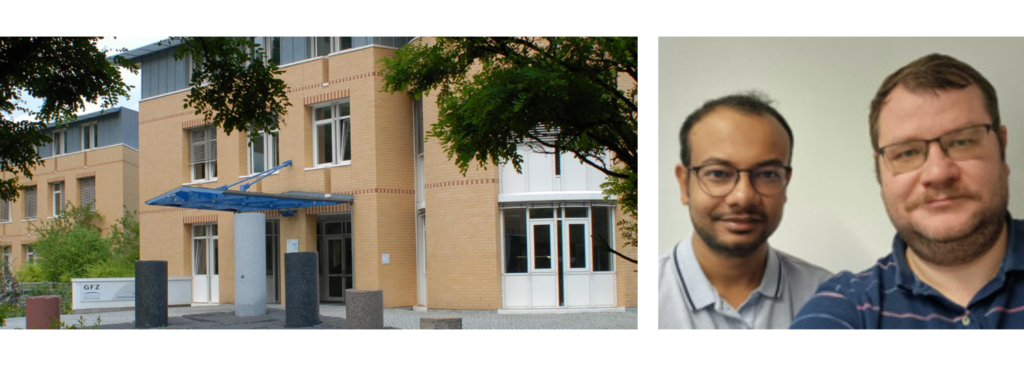
Dr. Giridas Maiti is awarded with KHYS Connecting Young Scientist (ConYS) Travel Grant from KIT.
Under this program he will work in GFZ Potsdam for four weeks (17 October to 12 November, 2022) in Lithosphere Dynamics research group with Dr. Alexander Koptev.
During this research stay he will work on developing 3D thermo-mechanical numerical models of ridge subduction to investigate its impact on overriding plate's topography and deformation.

We are happy to introduce the newest member of our group, Dr. Giridas Maiti.
Giridas completed his PhD at the Jadavpur University (India) under the guidance of Prof. Dr. Nibir Mandal. During his PhD he studied the Himalayan-Tibet mountain system by means of numerical geodynamic modelling.
In our group, he will work on the influence of geodynamic processes on the evolution of sedimentary basins.

We welcome our new PhD student Lucas Eskens.
Lucas completed his Master’s degree in Geosciences at Utrecht University (Netherlands). His master thesis focused on the effect of sub- and supra salt structures on the development of the Central Graben, North Sea.
His PhD work will focus on the lithospheric- and crustal-scale processes affecting along-strike heterogeneity in the Molasse Basin (Alps) architecture. The project is supported by the DFG SPP 4DMB –Mountain building in 4D Program.
We are looking forward to the next years with you in our team!
